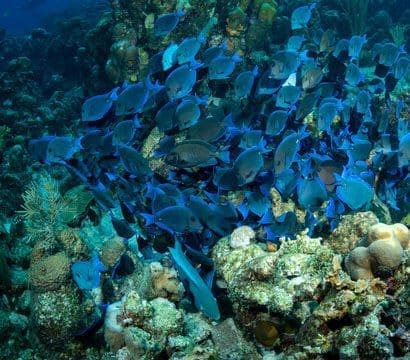
Welcome to the amazing world of cetaceans! Imagine diving deep into the ocean and meeting some of the coolest creatures on the planet. These creatures are called ‘cetaceans.’ They include whales, dolphins, and porpoises. Cetaceans are not like any other animals you might know. They’re super smart, live in the water, and have incredible stories to tell.
In this adventure, we’ll explore the secrets of the sea and discover how scientists study these incredible beings. Get ready to learn about their playful behavior, their underwater songs, and the challenges they face. Are you excited? Let’s dive in and start our journey into the fascinating world of cetaceans!
Contents
Discovering the Wonders of Cetaceans🐟
Hey there, young adventurers! Today, we’re diving into the fascinating world of cetaceans, some of the coolest creatures that call the underwater realm their home.
Who Are the Cetaceans?
Cetaceans are a special group of animals that live beneath the waves. They include three main types: whales, dolphins, and porpoises.
A Whale of a Tale
Whales are like the gentle giants of the ocean. Some of them are huge—imagine a school bus, but even longer! These magnificent creatures come in different sizes and shapes, but they all share one thing in common: they live their whole lives underwater.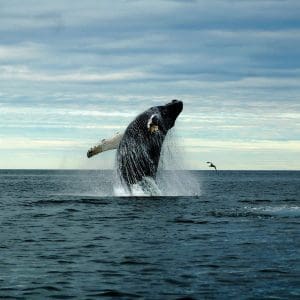
Dolphins: The Water Acrobats
Dolphins, on the other hand, are like the Olympic athletes of the sea. They’re known for their playful jumps, flips, and spins. Dolphins are often spotted riding the waves created by boats, showing off their amazing skills.
Meet the Shy Ones: Porpoises
Porpoises are the shy members of the cetacean family. They’re a bit smaller and tend to keep to themselves.These creatures are not as showy as dolphins, but they have their own unique charm.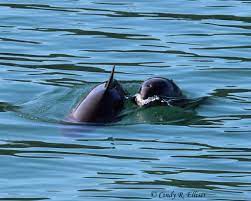
The Scoop on Size and Behavior
Cetaceans come in all sizes, from the tiny vaquita, which is about the size of a person, to the massive blue whale, the largest animal on Earth! And here’s something super cool: they are mammals just like us, which means they have lungs and breathe air. So, they need to come up to the surface to take a breath now and then.
Cetaceans are known for their clever ways of communicating underwater. Some even sing songs! These songs are so amazing that scientists who study cetaceans (that’s what we call ‘cetacean studies’) often listen in to learn more about these underwater melodies.
Where in the World Are They?
Cetaceans are quite the globetrotters. You can find them in oceans all around the world. They live in different areas, from chilly Arctic waters to the warm and tropical seas.
Now that we’ve got to know a bit more about these incredible creatures, let’s dive deeper into the world of ‘Cetacean Studies.’
Exploring the Past: Early Cetacean Studies🐟
Alright, young explorers, let’s take a journey back in time to discover how people started unraveling the mysteries of cetaceans!
A Glimpse into the Past
Long ago, when people first encountered these amazing creatures of the sea, they were captivated by their beauty and mystery. Early sailors and seafarers would tell stories of enormous sea monsters that would breach the surface of the ocean.
It wasn’t until much later, in the 18th century, that scientists and researchers began to study cetaceans in a more structured way. This was the birth of ‘cetacean studies,’ the study of marine animals like whales and dolphins.
Pioneering Observations
Picture this: early scientists and adventurers braving the high seas with their spyglasses, trying to catch a glimpse of these magnificent animals. They would meticulously record their observations, sketching out the shapes and behaviors of the cetaceans they encountered.
Milestones in Cetacean Research
As time passed, technology began to play a huge role in cetacean studies. With the invention of submarines, underwater cameras, and hydrophones (special microphones that pick up sounds underwater), scientists could explore the depths of the ocean and learn more about these incredible creatures.
One of the most significant milestones was the discovery that cetaceans are not just big fish but are, in fact, mammals like us. They have lungs, give birth to live young, and feed their babies with milk. This realization helped change how we understood and respected these animals.
Cetacean Studies Today
Fast forward to today, and there are even special graduate programs in ‘cetacean studies’ offered by universities. Students who are passionate about marine life can now pursue their dreams of becoming marine biologists and researchers.
If you’re wondering, “What school has the best program for cetacean studies?” Well, there are several renowned universities around the world that offer excellent programs in marine biology and cetacean studies.
Unlocking Cetacean Secrets: Methods of Study🐟
Welcome back, young explorers! In this part of our adventure, we’re going to uncover the cool tools and techniques scientists use to study cetaceans, those amazing sea creatures.
Tools of the Trade
So, you might be wondering, “How do scientists learn all about whales and dolphins?” Well, they use some pretty neat stuff. Let’s take a look:
- Boats: Scientists hop on boats and sail out to the open sea. From there, they can watch cetaceans from a distance, making careful notes about what they see.
- Drones: Just like the ones you might see flying in the sky, scientists use drones to get a bird’s-eye view of cetaceans swimming below the surface..
- Tracking Devices: These are like high-tech bracelets for whales and dolphins. They help scientists follow their movements and learn about their daily routines.
The Magic of Bioacoustics
Now, let’s dive into something really cool: bioacoustics. It’s like the secret language of the sea!
Bioacoustics is all about the sounds that cetaceans make underwater. Dolphins and whales are known for their clicks, whistles, and even songs! Scientists use special microphones called hydrophones to listen in on these amazing underwater conversations.
But why is this important? Well, it helps scientists understand how cetaceans communicate with each other. Are they chatting about where to find food, warning each other about dangers, or maybe even singing love songs?
The Cetacean Studies Institute
If you’re really curious about studying cetaceans, you might be thinking, “What school has the best program for cetacean studies?” There are actually some great places, like the Cetacean Studies Institute, where you can learn all about these magnificent creatures.
Unveiling the World of Cetacean Behavior and Ecology🐟
Hello, young ocean enthusiasts! Today, we’re going to plunge into the exciting world of cetacean behavior and ecology, where we’ll learn how these incredible sea creatures live and interact with their watery world.
Cetacean Behavior: A Fascinating Study
Scientists who dedicate their time to the studies of wild cetacean behavior are like underwater detectives. They want to understand how dolphins and whales behave in their natural homes, the vast oceans.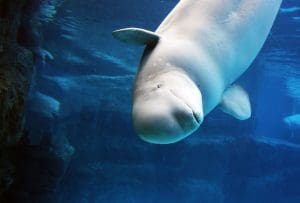
One of the things they look at is the way cetaceans play, communicate, and work together in their groups, called pods. These social creatures have a lot to teach us about teamwork and communication. Just like friends working together on a fun project!
Hunting Strategies of the Sea
Now, let’s talk about dinner time in the ocean. Cetaceans are quite clever when it comes to finding food. They have various hunting strategies, just like superheroes have their special powers.
Some whales, like humpbacks, use a technique called “bubble netting.” They blow bubbles in a circle around a school of fish to trap them, then swim up through the center with their mouths wide open! Imagine catching a soccer ball with your mouth while doing a backflip – that’s their impressive dinner move.
Guardians of the Ocean
Cetaceans play a vital role in the big picture of our marine world. They help keep the ocean ecosystem in balance.
Imagine if there were too many fish in the sea – it would be like having too many people at a birthday party without enough cake! Cetaceans, by dining on fish and krill, help control these populations and ensure that all creatures in the ocean have enough to eat.
Unveiling Recent Discoveries in Cetacean Studies🐟
Hey there, young marine enthusiasts! In this part of our journey, we’re going to dive into the exciting world of recent discoveries in cetacean studies.
Recent Breakthroughs: What’s New in Cetacean Studies?
So, you might be wondering, “What cool things have scientists found out about dolphins and whales recently?” Well, hold onto your snorkels, because there’s a lot to be excited about!
- Language Lessons: Scientists have discovered that dolphins and some whales have their own languages! They communicate with unique clicks, whistles, and songs. Just like you and your friends have secret codes and inside jokes, these marine marvels have their own way of chatting.
- Super Smart Dolphins: Dolphins are proving to be even more intelligent than we thought. Researchers have found that they can solve complex problems and even use tools, like sponges, to protect their noses while foraging on the ocean floor.
- Whales on the Move: Recent studies have revealed the incredible journeys that some whales take. They swim thousands of miles from feeding areas to breeding grounds. It’s like going on an epic road trip, but through the ocean!
Why Are These Discoveries Important?
These exciting findings in cetacean studies are like puzzle pieces that help us understand the big picture of ocean life.
Imagine if we didn’t know how to speak or understand each other. Life would be quite challenging, right? Learning about the languages of dolphins and whales helps us appreciate their intelligence and the importance of conserving their habitats.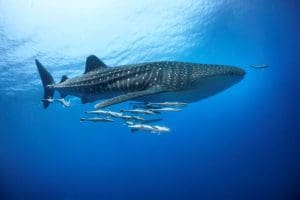
Knowing that dolphins can solve problems and use tools gives us insights into the complex ways animals adapt to their environments. It’s like discovering new superhero powers in the animal kingdom!
Cetacean Studies Centers: A Hub of Discovery
If you’re passionate about these discoveries and want to get closer to cetaceans, you might be asking, “Is there a cetacean studies center near NC (North Carolina)?” Well, these centers can be found in various coastal regions, offering opportunities for students and researchers to dive into the world of marine science.
Challenges and Threats.🐟
Hey there, fellow ocean advocates! In this part of our journey, we’re going to dive deep into the challenges and threats that our beloved cetaceans face in the big blue ocean.
Facing the Perils of the Sea
Our cetacean friends, the whales and dolphins, may seem invincible, but they’re not. They face some pretty tough challenges out there:
- Troubled Waters: One major issue is pollution. Imagine going for a swim in a pool filled with trash – that’s what some parts of the ocean are like for cetaceans. Pollutants like plastic, chemicals, and oil can harm them and their homes.
- The Hunt: Another threat they face is hunting. Although it’s illegal in many places, some people still hunt cetaceans for their meat, blubber, or other body parts. It’s like someone trying to catch your friends or family members!
- Climate Crisis: As our planet warms due to climate change, the ocean is changing too. Rising temperatures, melting ice, and unpredictable weather patterns can disrupt the cetaceans’ food sources and habitats. It’s like having your favorite playground disappear.
Conservation Heroes: What Can We Do?
Now, let’s talk about how we can be heroes for our cetacean friends and help protect them:
- Reduce, Reuse, Recycle: We can start by reducing our use of plastic, reusing items whenever possible, and recycling to keep trash out of the ocean. Every plastic bottle or bag we keep out of the sea is a win for our marine pals.
- Support Conservation Organizations: Many groups work tirelessly to protect cetaceans. You can support them by donating or even volunteering your time to help with beach clean-ups or educational programs.
- Raise Awareness: Share what you’ve learned about cetaceans with your friends and family. The more people know about these amazing creatures, the more likely they are to help protect them.
- Be Climate Conscious: We can also make choices that reduce our carbon footprint, like using less energy and supporting renewable energy sources. The healthier our planet, the better it is for cetaceans.

